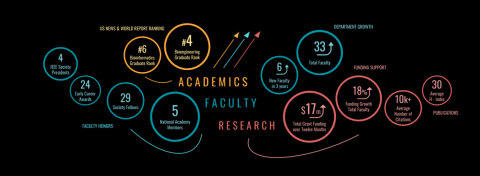Norden Huang, Ph.D.
K.T. Lee Chair Professor,
National Central University, Taiwan
Seminar Information

Traditionally, spectral analysis, defined as time to frequency conversion, is achieved through convolutional integral transforms based on additive expansions of a priori determined basis, mostly under linear and stationary assumptions. For nonlinear processes, the data can have both amplitude and frequency modulations generated by two different mechanisms: linear additive or nonlinear multiplicative processes. As all existing spectral analysis methods are based on additive expansions, either a priori or adaptive, none of them could represent the multiplicative processes. While the adaptive Hilbert spectral analysis could accommodate the intra-wave nonlinearity, the inter-wave nonlinear multiplicative mechanisms that include cross-scale coupling and phase lock modulations are left untreated. To resolve the multiplicative processes, we have to use additional dimensions in the spectrum to account for both the variations in frequency and amplitude modulations (FM and AM) simultaneously. For this necessity, we propose a full informational spectral representation: the Holo-Hilbert Spectral Analysis (HHSA), which would accommodate all the processes: additive and multiplicative, intra-mode and inter-mode, stationary and non-stationary, linear and nonlinear interactions. Applications to EEG data will be presented to demonstrate the usefulness of this new spectral representation.
Norden Huang is the K. T. Lee Chair professor at the National Central University in Taiwan and the funding director of the Research Center for Adaptive Data Analysis. He holds a doctoral degree (1967) in Fluid Mechanics and Mathematics from Johns Hopkins University. He served as Research Scientist and Senior Fellow at NASA Goddard Space Flight Center (1975-2006) and the Chief Scientist for Ocean Sciences NASA from 2000 to 2006. He also served as a Faculty Associate in the Engineering Division, with California Institute of Technology (1997 to 2003). While working in NASA, he had developed a new adaptive Hilbert-Huang Transform (HHT), specifically designed to analyze nonstationary and nonlinear time series. For this invention, he was awarded the 1998 NASA Special Space Act Award with the citation, ‘[Dr. Huang’s new method] is one of the most important discoveries in the field of applied mathematics in NASA history.’ The details of HHT are covered in many patents by NASA; and his initial paper on HHT has been cited more than 12,000 times (Google Scholar). “For contributions to the analysis of nonlinear stochastic signals and related mathematical applications in engineering, biology, and other sciences (NAE Citation),” he was elected a members of the US National Academy of Engineering, 2000; Academia Sinica, 2004; and a Foreign Member of the Chinese Academy of Engineering, 2006. Over the last few years, he has engaged in applications in biomedical areas by establishing a Joint Center for Dynamical Biomarkers and Translational Medicine at NCU with Professor Chung Kang Peng, as the Co-Director, from Margret and H. A. Rey Institute for Nonlinear Dynamics in Physiology & Medicine, Division of Interdisciplinary Medicine, Beth Israel Deaconess Medical Center, Harvard Medical School.
Recently, he has found deficiencies on HHT. As a result, he developed the Holo-Hilbert Spectral Analysis (HHSA), and intrinsic Probability Distribution Function (iPDF) which give a new view of the data in the spectral and probabilistic representations fully considered nonlinear multiplicative effects of the physical processes. Applications of HHSA and iPDF on EEG and turbulence data are areas of his active research currently.
